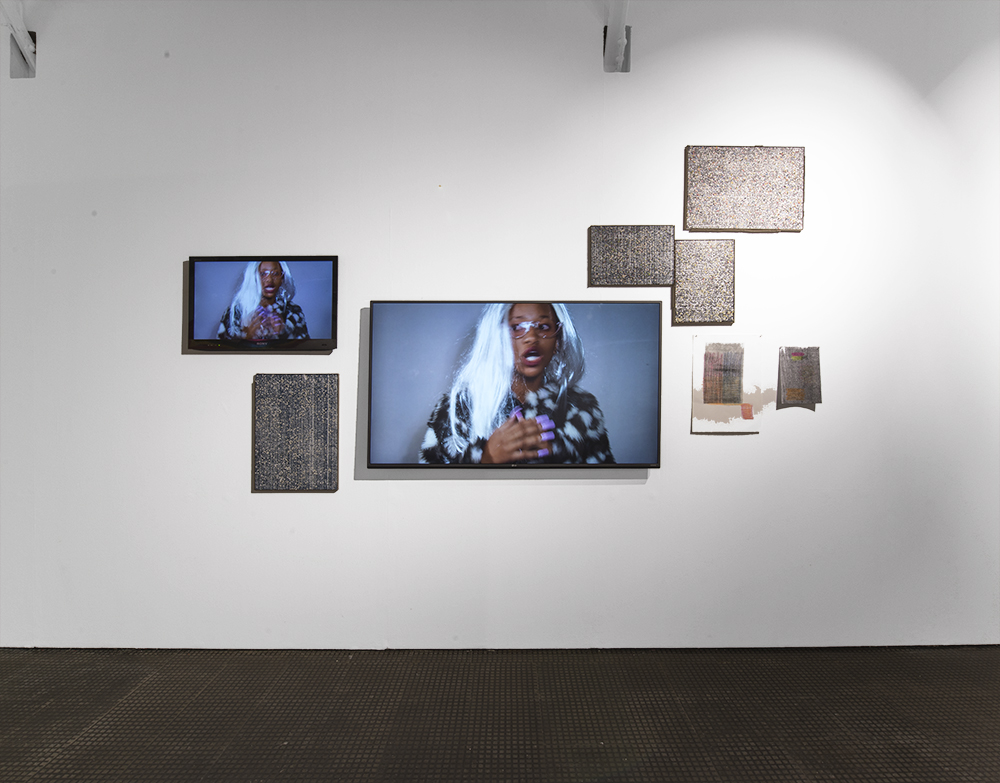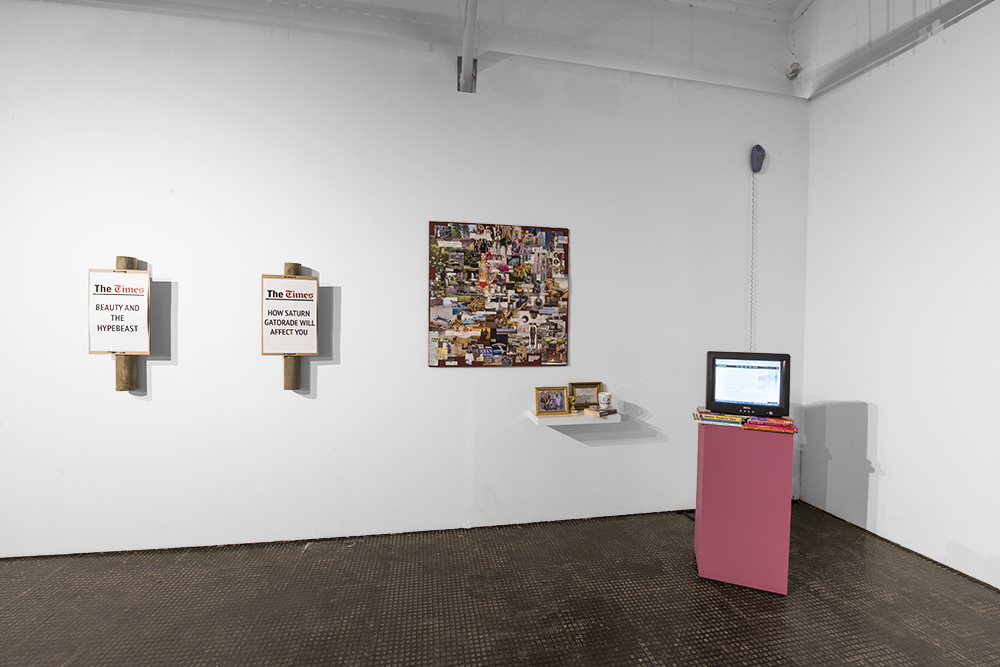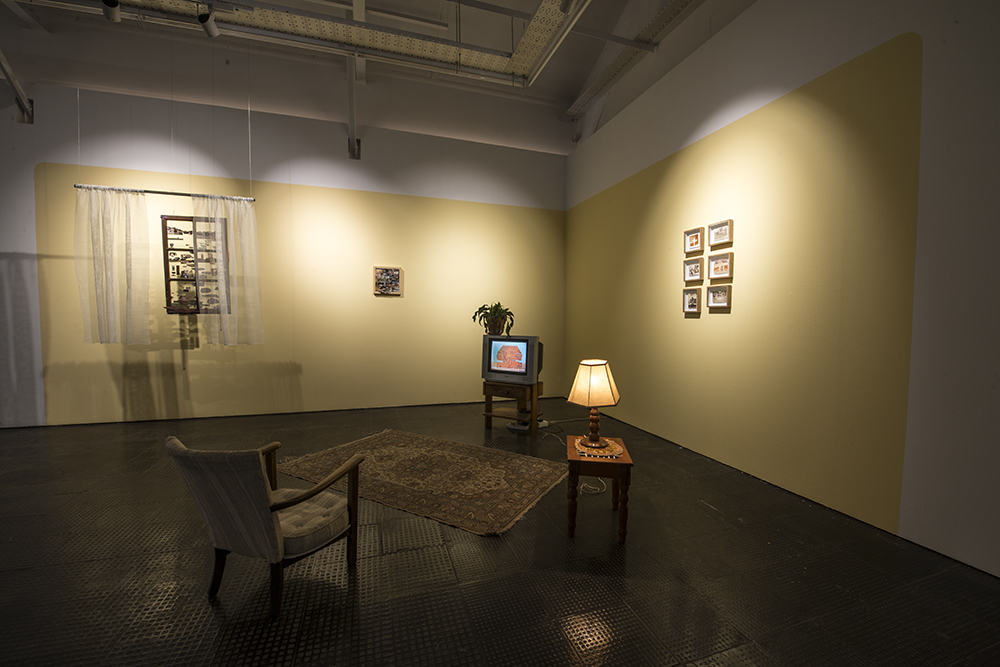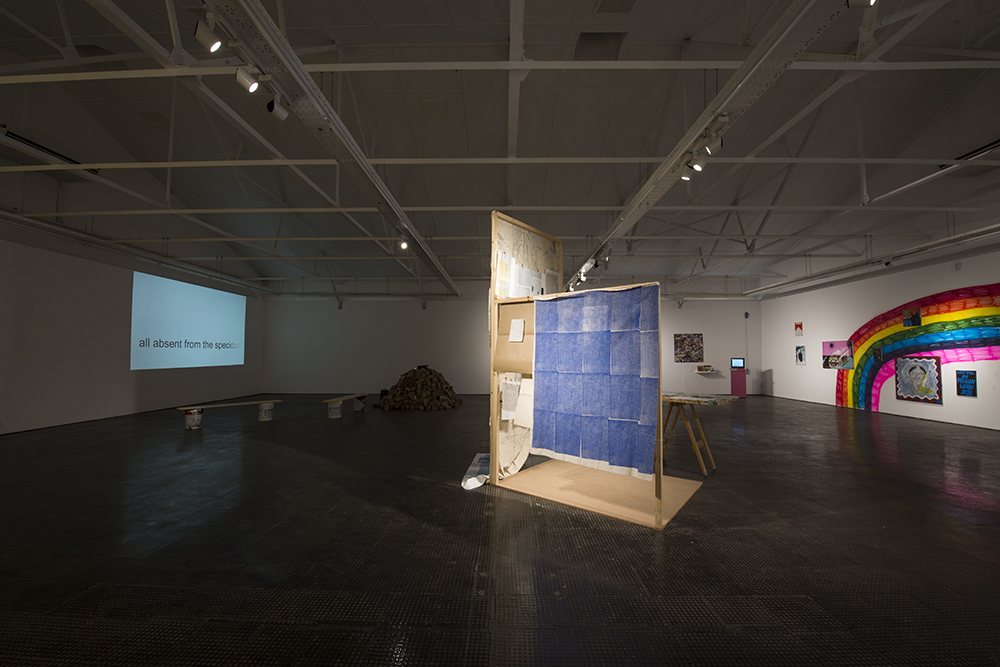The group exhibition shady tactics showing at SMAC Gallery in Cape Town purposefully throws shade at institutions, and presents this as a productive past time for artists. For this show ‘throwing shade’ is a kind of playful, at times flirtatious, interaction with the use these institutions present for the practice of artists. This productive cheekiness highlights the power matrix within which these institutions operate and emphasizes their maintenance of the heavy, pungent presence of coloniality. In an email interview with the show’s curator, Thuli Gamedze, she explained that for her criticality is a “deeply creative impulse.” The show’s title opens up a space for work that “chooses to be explicitly political and critical” and for artists who “resist the stylistic desires of art institutions, who can be guilty of pushing for a certain ‘look and feel’ when artists begin to be ’political’.” The projects for the show share a number of alternatives – “new, incorrect uses for things, along with incomplete and drifting ideas, failures, jokes and strange approaches to logic.”
When asked about her approach for curating shady tactics, Thulile explained that she wanted to work with artists of colour who are serious about the role of playfulness in their practices. The fact that the people included in the show are not represented by specific galleries brings a kind of open playfulness and unbounded approach for critical expression. “I was really anxious when I was trying to figure out who to ask – I scoured the last few years of catalogues from art schools around the country, gained a stalker-like edge on instagram, and made like a hundred lists, torturing myself trying to make rational sense of what was actually quite an intuitive process.” shady tactics includes work by Sitaara Stodel, Callan Grecia, Simnikiwe Buhlungu, Mitchell Messina, Katleho Mosehle and Bonolo Kavula.

In getting the idea for the show off the ground, Thulile explained that conversation and sociality are important for how she wanted the process to unfold. Having never worked closely with a gallery as a curator before, and only havng educational spaces as reference points, Thulile created a rhythm of regular dialogue with the selected artists and, when possible, shared space with the artists to work through ideas for the show.
Following her creative impulse, Thulile found connections between the works, ensuring that they speak to one another as well as the title for the show. The text for the show came out of watching the various stages of creation for each work. “The objects were not that important though. I think I was interested in giving space to people as whole creative entities – people whose sensibility, tone and politics I respect as generative, if visually unpredictable and always swinging. I think things weaved themselves together quite nicely visually, but I also think there was a big chance it could’ve ended up looking off as a whole because I hadn’t pinned people down specifically on my expectation of their stylistic approaches. But that’s interesting too.”

Each artist’s work connects with the exhibition title by engaging in some form of institutional appropriation – “using ‘standardised’ language but messing around with it to change the message.” Callan Gracia’s fuck you I tried my best looks at public walls and the messaging conveyed on them through his depiction of a giant rainbow sprinkled with fear and anxiety-inducing images. In this way he unpicks the rainbow nation rhetoric that is used in post-apartheid South Africa. “Callan’s huge rainbow is complicated and disrupted by his numerous depictions of dystopian destructions of post-1994 middle-class idealism,” Thuli explains.
In A Brief History of the Institute Mitchell Messina uses a collection of high quality image files which are curated and repeated over a number of scenes, accompanied by sound and text, to tell the stories around the fictional construction of a new art institution. The stories illuminate the money-driven nature of the art world within our neoliberal environment. “Mitch’s detailed storytelling…parallels familiar narratives of big money’s relationships with art in Africa.”

Katleho Mosehle’s (NO) SEX IN CT makes a comment on white feminism within the media, embodied by the character of Carrie Bradshaw from Sex and the City. This work demonstrates the violence of white femininism. Mosehle’s absurdist recreation of Carrie uses humour and caricature as devices to highlight this. Bonolo Kavula’s Fragile: this way up looks at the ways in which the colonial gaze ‘others’ and reinforces cultural dominance. By using the discursive and visual language of the YouTube DIY tutorial, Bonolo teaches the printing process and simultaneously problematizes the divide between ‘art’ and ‘craft’. “Bonolo’s work, combining a satirical commentary of art versus craft has intense political relevance in SA’s super elitist art world,” Thuli adds.
In her work Homesick, Sitaara Stodel constructs a section of a living room, with the overall work teasing out definitions of ‘homeness’. She uses still images collated from the internet and secondhand stores that demonstrate idealistic ideas of home to create a collage and video present in the installation. Her play on suspension and stillness creates an uneasy mood, recognizing that this home is not fully formed or able to contain a fixed comfort. “Sitaara’s work acts as quite an intimate reference point for the whole show, where her appropriation of images of other peoples’ homes to make her own narrative speaks to the desire for whatever ‘being at home’ means – an inherently political notion here, but also one she tackles in a deeply personal way.”

Simnikiwe Buhlungu’s performative installation A Loooooong Ass Message, ya dig? uses an old fax machine to deliver a message that spills over a stack of office boxes. This indirect presence of the artist speaks to questions around lack of access. The interruption of the gallery’s telephone line to deliver faxes of “the content erased and re-erased by art institutions” points to the importance of inserting politicised work that speaks against this erasure.
The show will be up at SMAC Gallery in Cape Town until the 9th of June.








